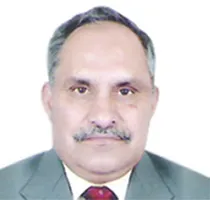One may have noticed that most of the terrorist actions, including the recent Pathankot air base strike, had one thing in common. They were carried out by terrorists dressed in Indian Army combat uniforms. Such a modus operandi is understandable since these have, in a sense, been suicide attacks and the paramount intention of the terrorists has been to use deception that would help them reach their target undetected and surprise the protective cordon, thereby causing confusion and delaying the expected response.
The Armed Forces have, in their own limited way, attempted to dissuade retailers and the general public from either selling or purchasing camouflage cloth of the type used in the manufacture of our combat dresses, but with little success as such advice lacks legal sanctity. It’s also considered that camouflage trousers and jackets convey machismo and have increasingly come to become a fashion statement, especially among the young and the hip crowd. Unfortunately, this attempt at projecting a macho image is not just restricted to civilians, but has over the years been embraced by the uniformed services, including even the military.
Military uniforms, especially with their connected accoutrement, are distinct, easily identifiable and ceremonial. They convey authority of the state and place the wearer on a pedestal. These are the very reasons why men and women in uniform are expected to be well groomed, smartly turned-out and convey an air of efficiency. The combat dress was introduced as functional wear, shorn of all accoutrement, to be worn by Army personnel in field conditions while participating in the conduct of training or on operational deployments. Apart from the robustness, utility and comfort that the soldier derives from such a dress, the uniform also aims at portraying an air of operational preparedness and in conveying a sense of aggressiveness and suppressed violence, especially when the personnel possess their personal weapons. This air of authority and aloofness tends to create a fear psychosis among the general public that acts as a deterrent against their authority being challenged.
However like all perceptual tools, if misused or over exposed, not only do these tend to lose their sheen and salutary impact, but also create a sense of militarisation and tension among the public at large, which is not conducive to what we would want to project as a stable and peaceful democracy. What is worse is the misguided policy of the police and the paramilitary forces to also copy the military and adopt combat dress for their personnel. Their attempts to emulate the military, which they are certainly not, in terms of organisation, training or capabilities, are uncalled for and appear wholly ridiculous. By the very nature of their job, they must be approachable to the general public and convey a sense of order and civility.
It is unfortunate that the Government of the day has not understood as to why the military must be kept aloof from the citizenry and distinct from the police and their armed counterparts. The military is the final line of defence that the Government has for dealing with civil disobedience that crosses the boundaries of democratic behaviour. In dealing with its own citizenry, the military is expected to use minimum force, which requires that its moral authority be respected by all. This is only feasible when it is not used as a matter of routine in what is necessarily a police responsibility of maintaining law and order and is considered apolitical and non-partisan. By its very function, the police, especially in our country, is neither, and by attempting to portray its force as military personnel, the police forces are attempting to destroy the clear distinction that exists between the two. This is bound to adversely impact the military’s ability to carry out its function when called in to control situations where the police has been unable to restore law and order or curtail violence.
Sadly, this turn of events does not end here and misguided attempts at further blurring the distinction between the military and the police has found its way into traditional military tattoos as well. Recently at the Beating the Retreat function in Delhi, we were witness to the bands of armed police and paramilitary forces being co-opted to play all manner of music, including Bollywood numbers, alongside military bands. Thus, a grand and solemn military ceremony degenerated into a spectacle and tamasha, doing little for the military’s formidable traditions. That the chiefs of the Armed Forces remained mute spectators and condoned this travesty, does their reputations little credit.
For the sake of the future of this country, the political leadership must come to its senses and refrain from converting the military into another police force or vice versa. The sooner wiser counsel prevails the better.
This commentary originally appeared in the The Pioneer.
The views expressed above belong to the author(s). ORF research and analyses now available on Telegram! Click here to access our curated content — blogs, longforms and interviews.




 PREV
PREV


